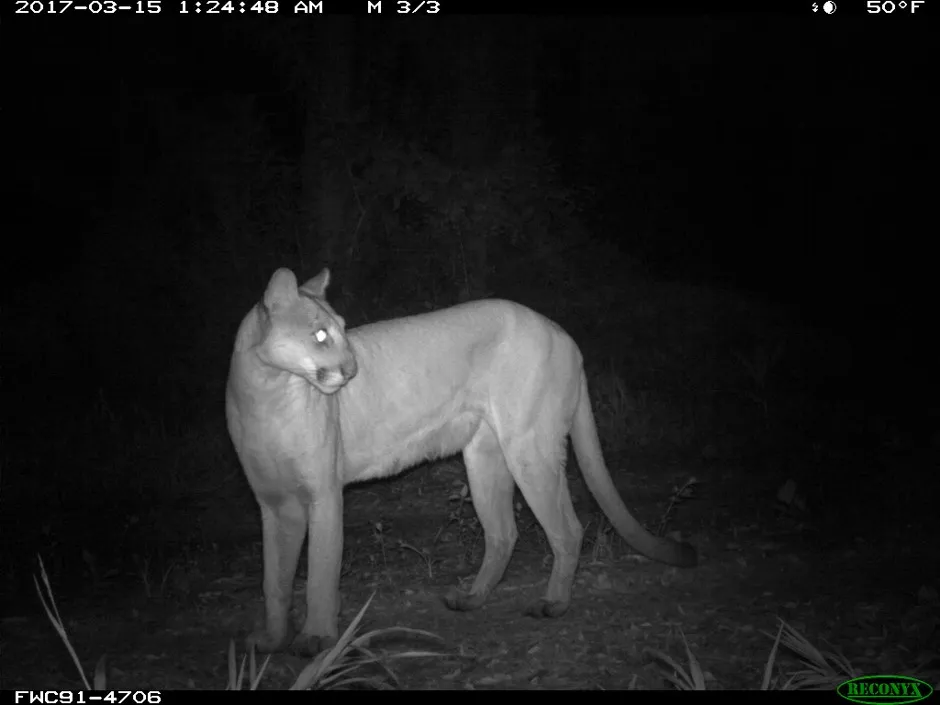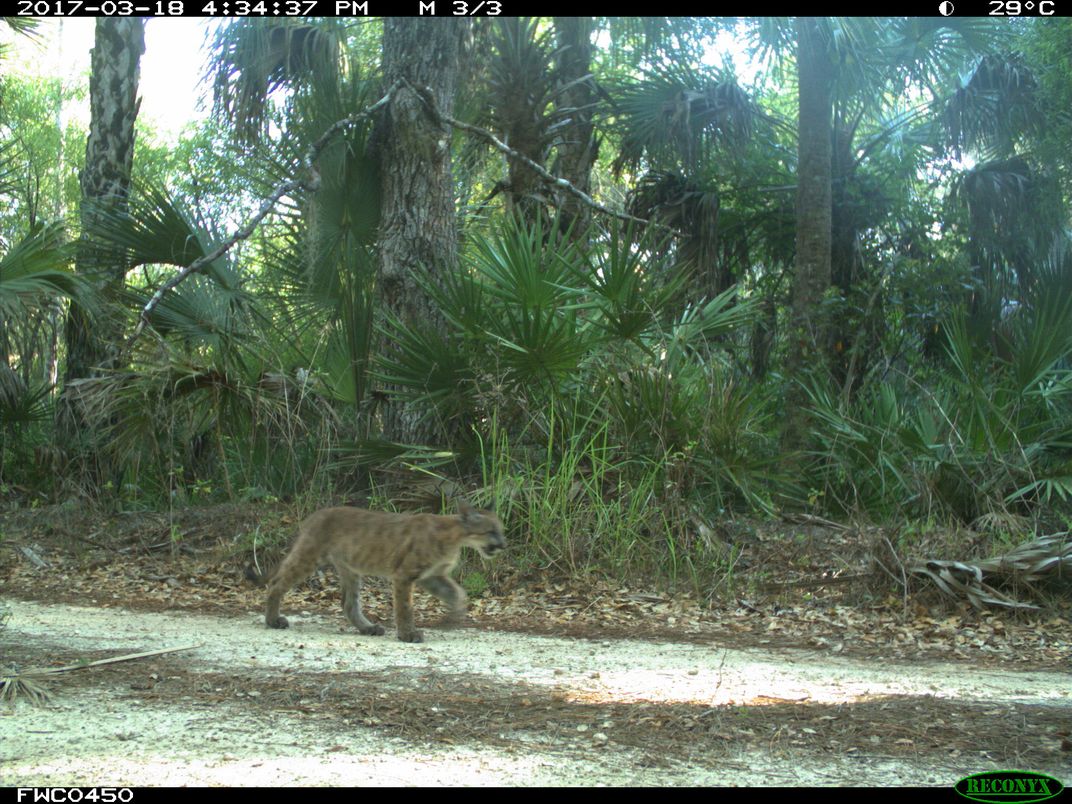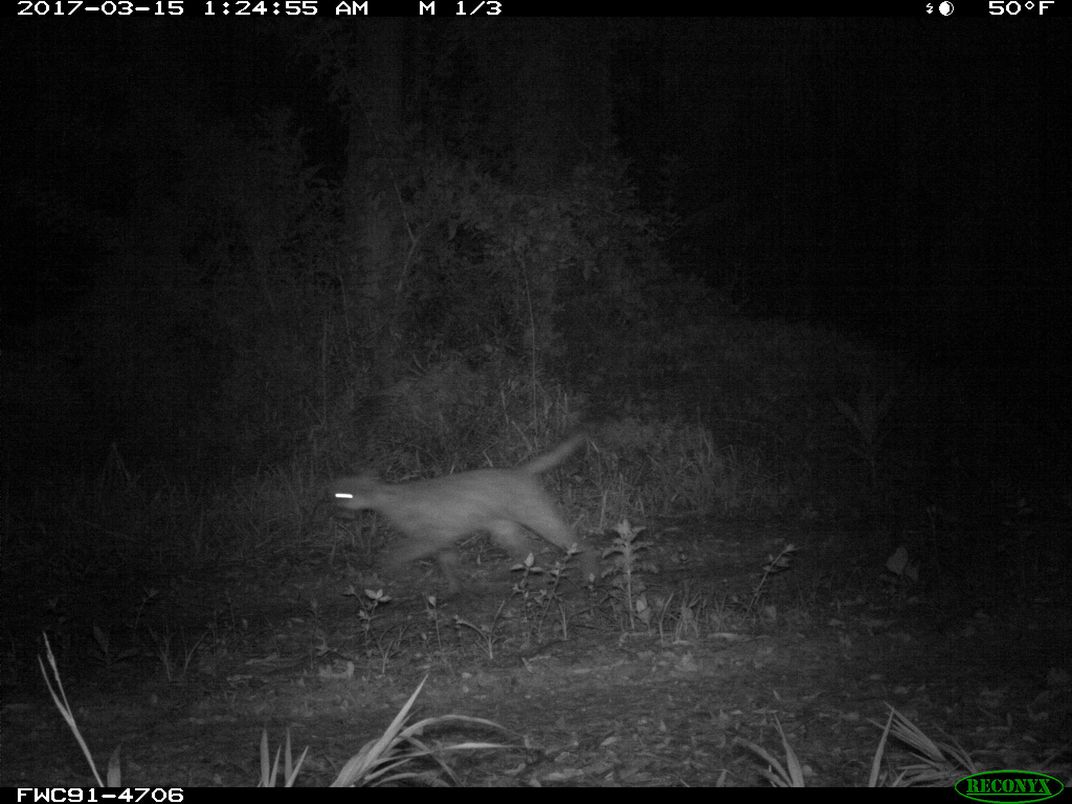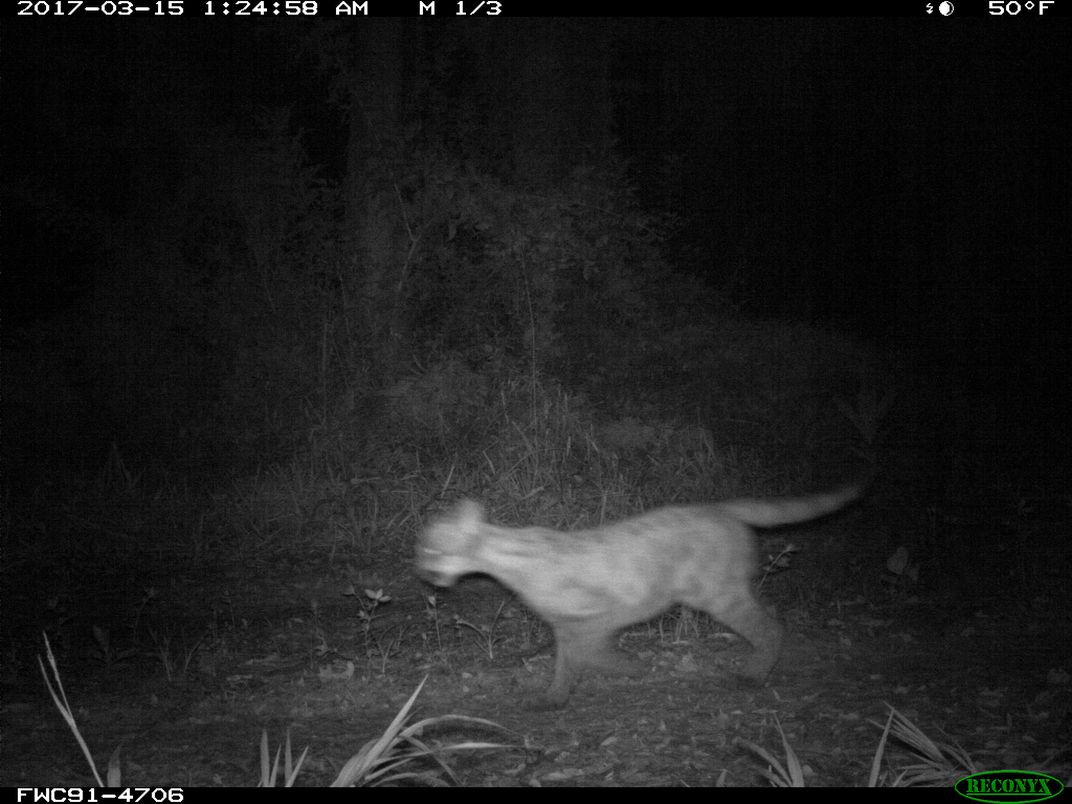Panther Kittens Spotted in Florida Give Hope for Their Species’ Survival
Trail cameras caught a mother panther trailed by two kittens
This week, the Florida Fish and Wildlife Conservation Commission announced that trail cameras caught a pair of Florida panther kittens north of the Caloosahatchee River, the first evidence offspring in this area since 1973—the year the big cat was added to the endangered species list.
As Karin Brulliard at The Washington Post reports, in the past 40 years, only male panthers have been spotted north of the river, which cuts across the tip of Florida and acts as a natural barrier for the cats. But last year, trail cameras caught images of what conservationists thought was a female panther crossing the river. Now this latest image—the female trailed by two kittens—confirms that the population is breeding.
“For many years, the Caloosahatchee River has appeared to be a major obstacle to northward movement of female panthers,” Darrell Land, FWC panther team leader says in the press release. “This verification of kittens with the female demonstrates panthers can expand their breeding territory across the river naturally.”
By 1995, just 50 Florida panthers (Puma concolor coryi), an eastern subspecies of the mountain lion, remained in the state—all south of the river, reports Jenny Staletovich for The Miami Herald. Over the years, however, the population has grown to between 120 and 230 panthers. But that’s a problem for the wide-ranging felines, which are now crowded into the southern tip of Florida. In recent years, dozens of panthers have been killed by cars trying to move north.
Staletovich reports that conservationists have hoped that a female, which do not range as far as males, would eventually be able to dodge traffic and make it across the river to help naturally establish a second population of panthers. They even considered a plan to transport females across the river, but could not find landowners to partner with them.
Bruillard reports that resistance from landowners may be the next big hurdle for Florida’s state animal and favorite team mascot. As the panther population rises, the animals have begun killing cattle and hunters complain they are killing deer.
Currently, the recovery plan for the animals requires that three separate populations of 240 animals each be established in Florida or Georgia before they are removed from the endangered species list, reports Greg Allen at NPR. In 2015, a coalition of ranchers and the FWC petitioned to have that reduced to a single population. Though they lost, agencies are now working with the panthers are very conscious of landowner concerns, Bruillard reports.
But that’s not the only obstacle for the cat's expansion north. As Joshua Sokol writes for The Atlantic, panthers need a lot of space to roam. The lack of contiguous habitat in the rest of Florida along with all the busy roads and a larger human population to contend with are all major hurdles to their complete recovery.
Even so, the small spotted balls of fur provide hope for the conservation community. "This is a major milestone on the road to recovery for the Florida panther," FWC Chairman Brian Yablonski says in the release.



